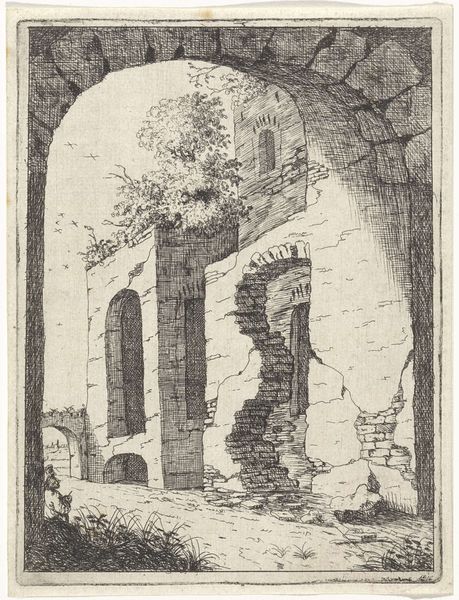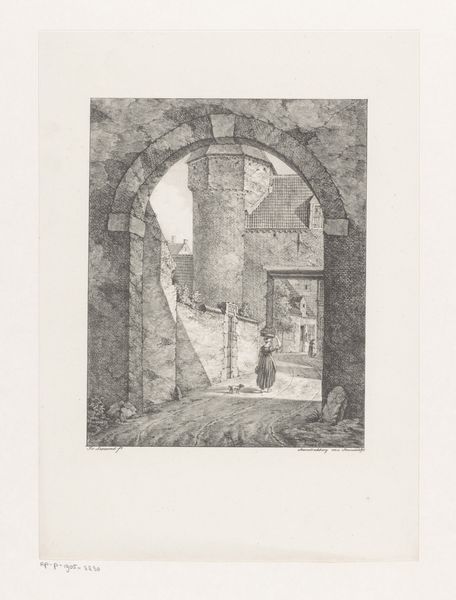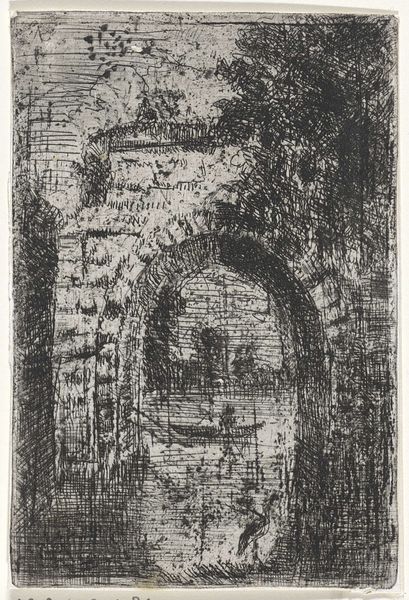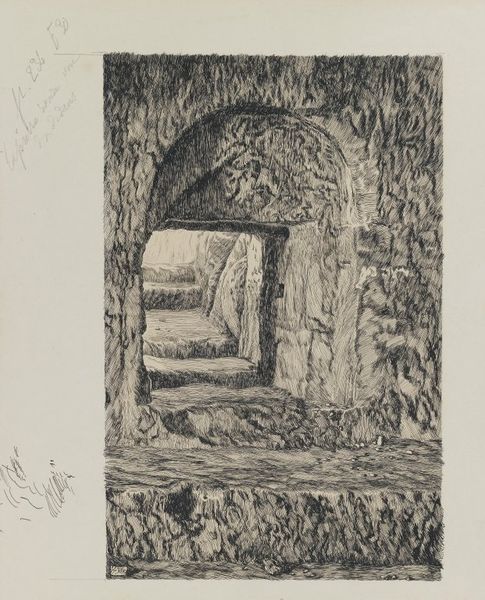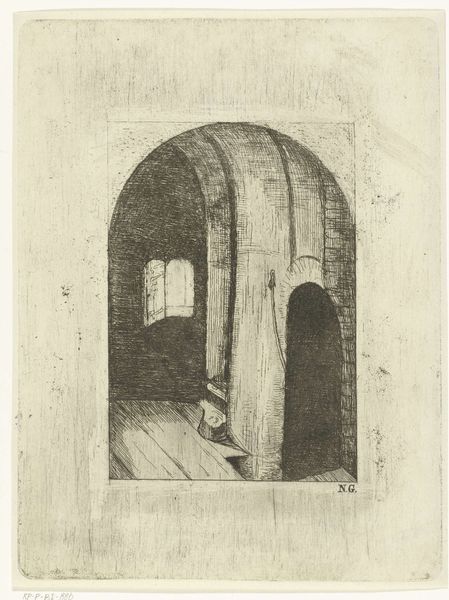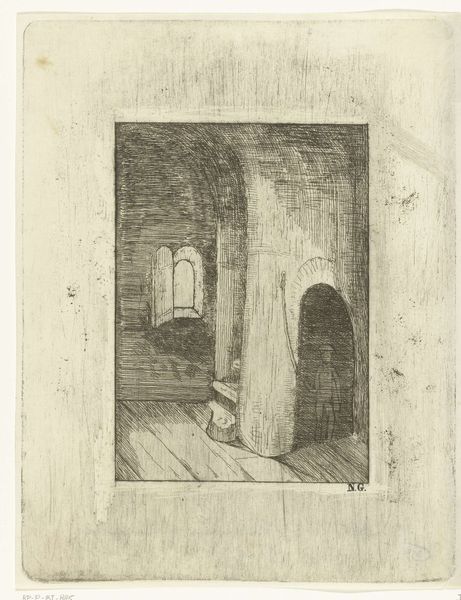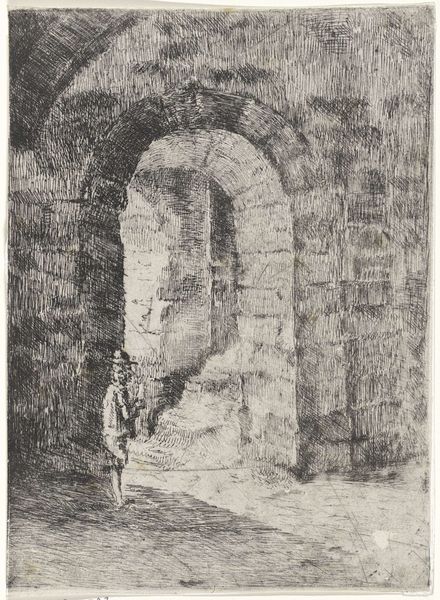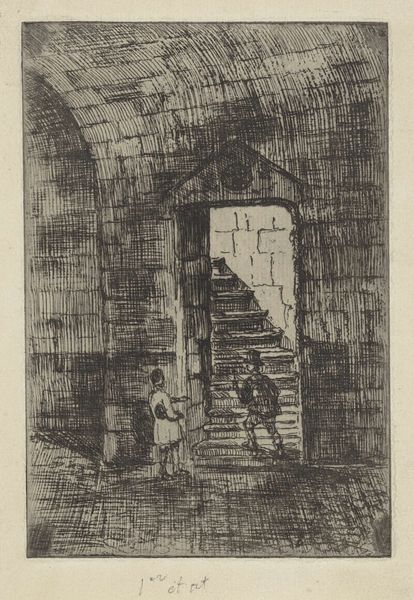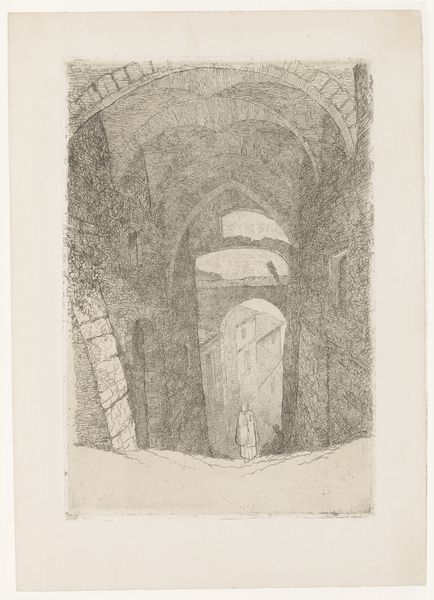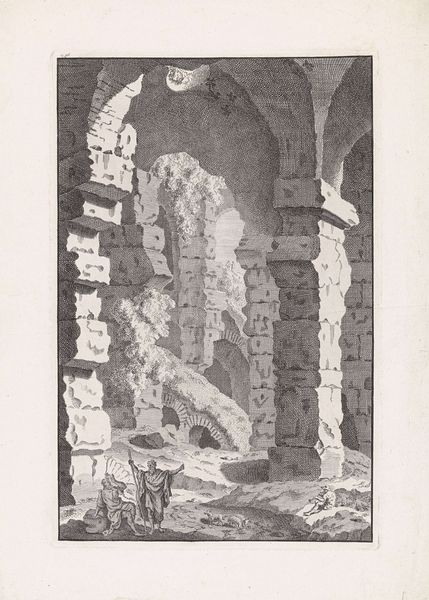
#
pencil drawn
#
amateur sketch
#
aged paper
#
light pencil work
#
pencil sketch
#
sketched
#
sketch book
#
personal sketchbook
#
sketchbook drawing
#
sketchbook art
Dimensions: height 185 mm, width 123 mm
Copyright: Rijks Museum: Open Domain
Editor: So, this is Hercules Segers' "The Entrance Gate of the Ruins of Brederode Castle," from around 1618-1622. It's a pencil drawing, and it has a haunting, almost apocalyptic mood. What strikes me is the emphasis on decay and ruin. What do you see in this piece? Curator: I see a powerful statement on the ephemerality of power and the impact of socio-political upheaval. Brederode Castle, in its ruined state, becomes a symbol of a feudal order in decline, especially considering the context of the Eighty Years' War. This wasn’t just a pretty landscape; it was a site of struggle. The skeletal remains of the castle serve as a stark reminder of resistance against Spanish rule. What does that tension mean to you as you look at it? Editor: I didn't initially connect it to the Eighty Years' War, but that context makes the "haunting" mood even stronger. It is not just decay, it is the effect of a colonial power on a place, a people. It goes beyond the romanticism of ruins, doesn't it? Curator: Precisely. Segers is forcing us to confront the very tangible consequences of conflict, the ways in which structures of power – be they literal castles or ideological systems – crumble and impact ordinary lives. It prompts us to reflect on who benefits from such ruin and whose stories are often erased from the historical narrative. We see the mark the state of constant war made on its subjects and the land they inhibited. Editor: This makes me think about how we still see the remnants of conflicts reflected in our world today, the way that war and colonial projects keep impacting places and lives. This old drawing, though it is a historical document, it feels like it’s speaking directly to the present. Curator: Absolutely. And by extension, about how we build, rebuild, and resist. I’m so glad we explored this today.
Comments
rijksmuseum about 2 years ago
⋮
Segers depicted Brederode Castle’s east gate meticulously and close-up. He accentuated various architectural elements with light and dark grey paint and the highlights with yellowish white oil paint.
Join the conversation
Join millions of artists and users on Artera today and experience the ultimate creative platform.
